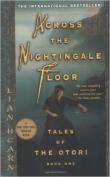 7003672769347093573.jpg
7003672769347093573.jpg
 7003672769347093573.jpg
7003672769347093573.jpg
'This chapter argues that setting is a privileged aspect of the popular fantasy genre, and it analyses setting in terms of both how texts are created and how they are circulated and enjoyed. ‘Plot driven’ and ‘character driven’ are commonplace descriptions of modern fiction, and often mark a distinction between genres of differing value. While these phrases are most usually deployed in non-academic writing such as reviews and other opinion-based works, they have appeared in recent research around reading and empathy. According to Frank Lachmann, readers of so-called literary works scored higher in empathy tests than readers of popular fiction; he suggests that this is because empathy is more readily aroused by ‘character-driven’ fiction where ‘the emotional repertoire of the reader is enlarged’ than by ‘plot-driven’ fiction (2015, p. 144). I note that Lachmann makes no attempt to elaborate on what these phrases might specifically mean, nor is there any consideration of the ‘emotional repertoire’ of, say, romance fiction, which fits his definition of character driven and yet remains the most reviled of the popular genres. While, to my mind, good fiction needs to attend to both plot and character equally well, neither of these necessary aspects of storytelling comes readily to mind as a ‘driver’ when thinking about fantasy fiction. In fact, the big engine of the genre appears to be the exposition and elaboration of the setting, from which characterisation and plots specific to the setting are then generated. Fantasy novels are, in many ways, setting driven, a feature that marks them out as unique among popular genres. Other genres where setting is an acknowledged pleasure are historical fiction (for example the work of Philippa Gregory or Diana Gabaldon) and the exotic travel memoir (for example texts set in aspirational destinations such as Provence and Tuscany); but these at least rely on settings that are real. Fantasy fiction, on the other hand, invites readers to immerse themselves in and admire an incredibly detailed world that is an invention of the author’s imagination.' (Introduction)
'This chapter argues that setting is a privileged aspect of the popular fantasy genre, and it analyses setting in terms of both how texts are created and how they are circulated and enjoyed. ‘Plot driven’ and ‘character driven’ are commonplace descriptions of modern fiction, and often mark a distinction between genres of differing value. While these phrases are most usually deployed in non-academic writing such as reviews and other opinion-based works, they have appeared in recent research around reading and empathy. According to Frank Lachmann, readers of so-called literary works scored higher in empathy tests than readers of popular fiction; he suggests that this is because empathy is more readily aroused by ‘character-driven’ fiction where ‘the emotional repertoire of the reader is enlarged’ than by ‘plot-driven’ fiction (2015, p. 144). I note that Lachmann makes no attempt to elaborate on what these phrases might specifically mean, nor is there any consideration of the ‘emotional repertoire’ of, say, romance fiction, which fits his definition of character driven and yet remains the most reviled of the popular genres. While, to my mind, good fiction needs to attend to both plot and character equally well, neither of these necessary aspects of storytelling comes readily to mind as a ‘driver’ when thinking about fantasy fiction. In fact, the big engine of the genre appears to be the exposition and elaboration of the setting, from which characterisation and plots specific to the setting are then generated. Fantasy novels are, in many ways, setting driven, a feature that marks them out as unique among popular genres. Other genres where setting is an acknowledged pleasure are historical fiction (for example the work of Philippa Gregory or Diana Gabaldon) and the exotic travel memoir (for example texts set in aspirational destinations such as Provence and Tuscany); but these at least rely on settings that are real. Fantasy fiction, on the other hand, invites readers to immerse themselves in and admire an incredibly detailed world that is an invention of the author’s imagination.' (Introduction)